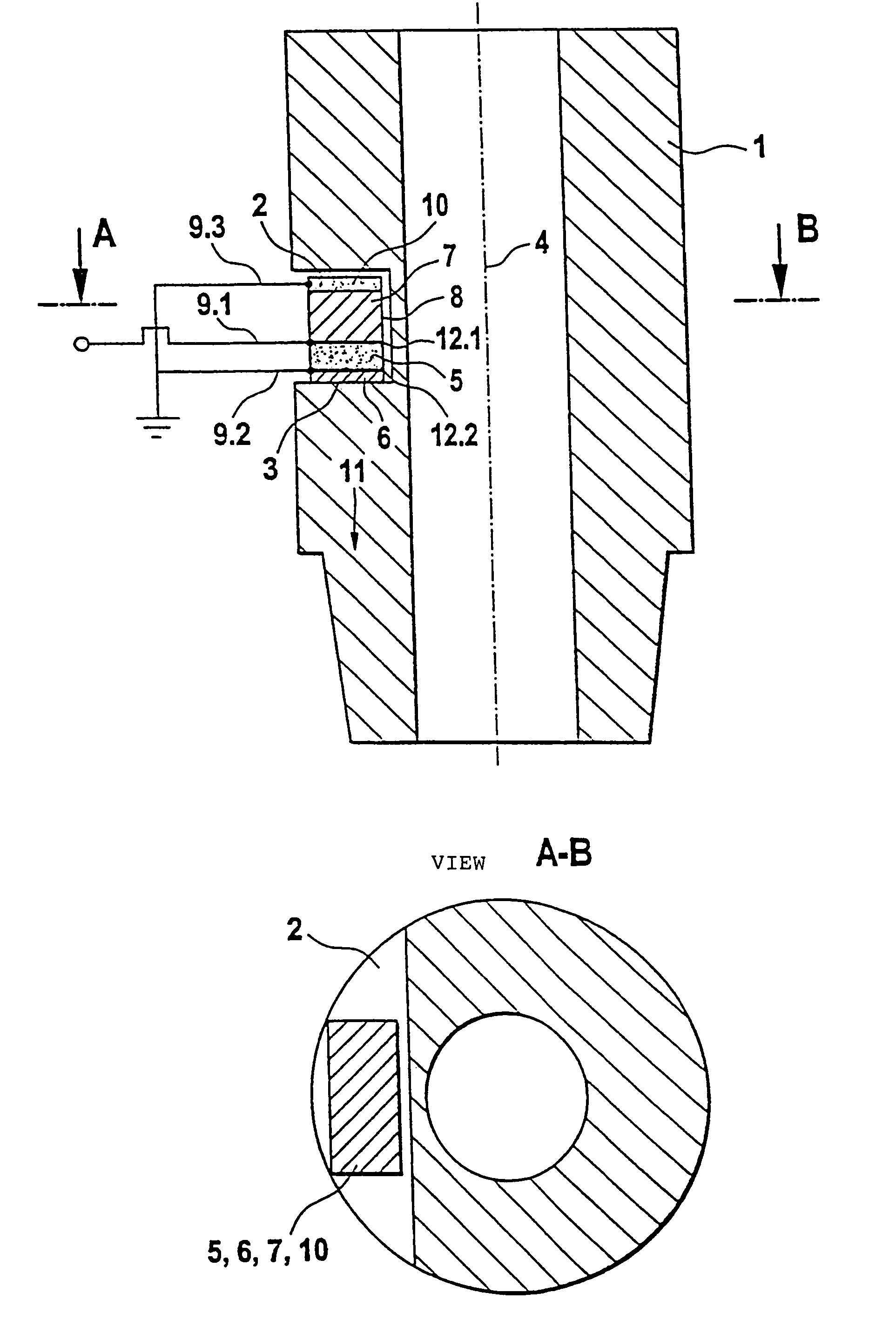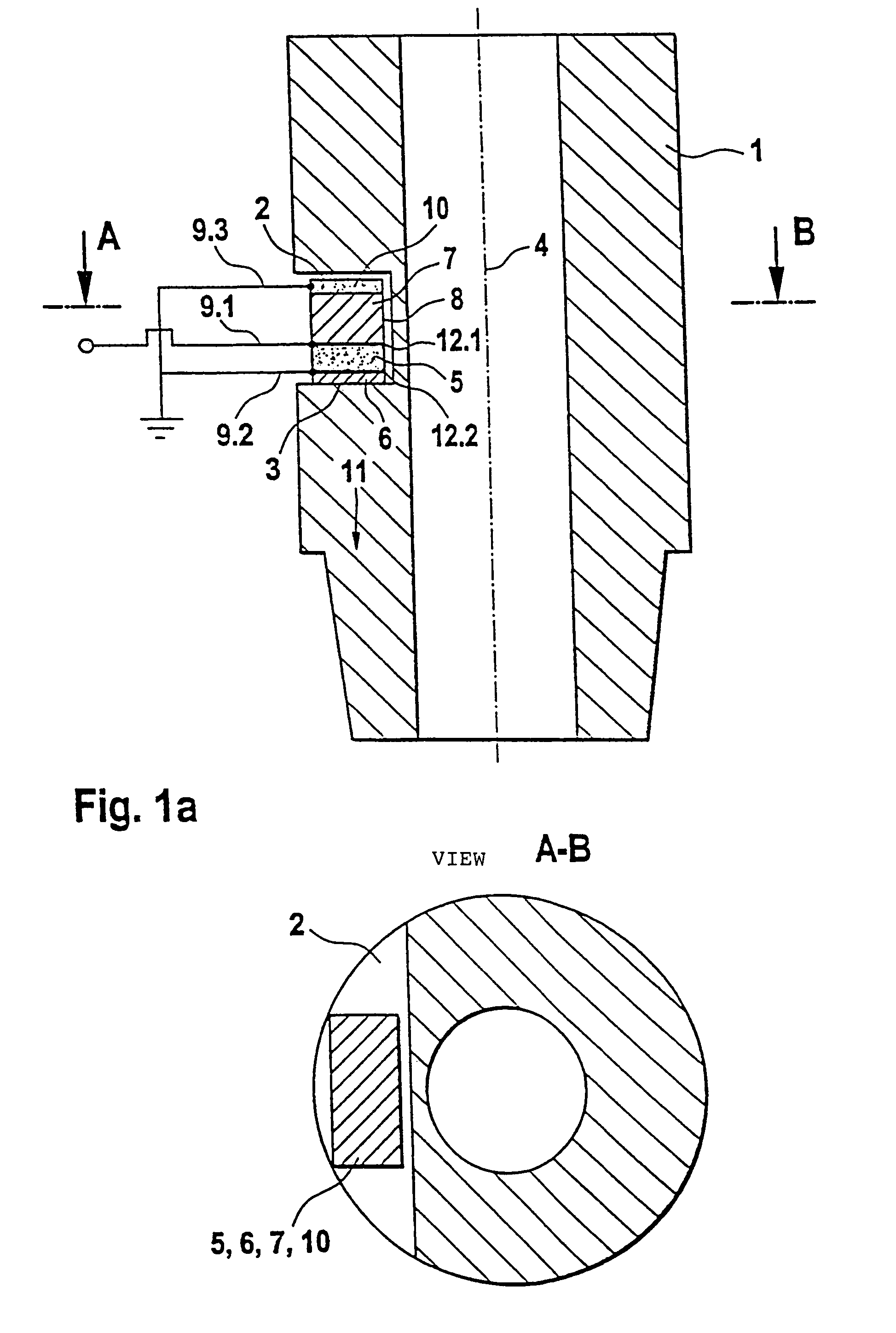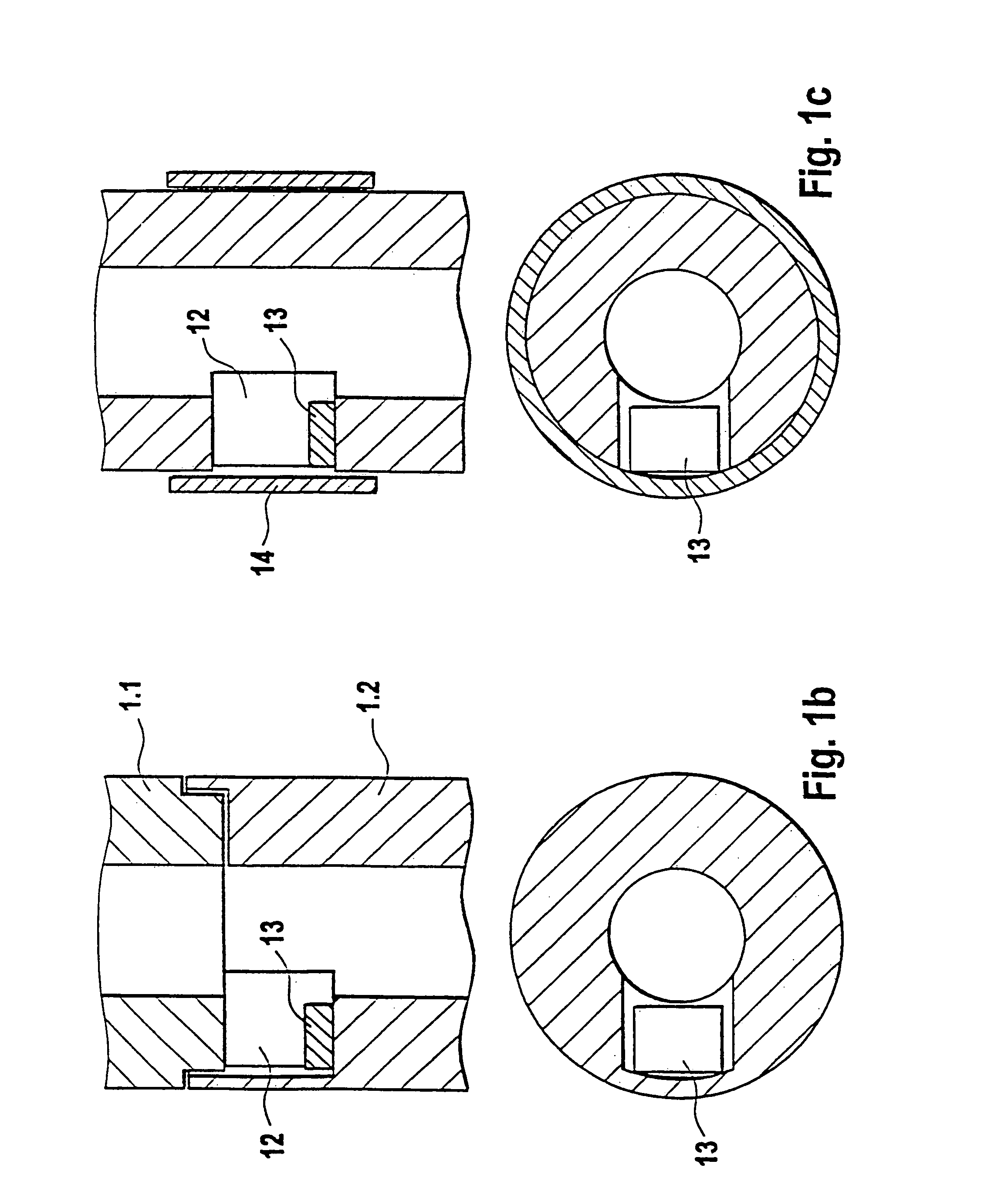Ultrasound sensor system
a technology of ultrasonic and sensor system, which is applied in the direction of mechanical vibration separation, instruments, specific gravity measurement, etc., can solve the problems of inability to achieve the direct direction of sound radiation in the direction of the weld spot, disadvantageous attachment of probes to the side of the electrode adapter, and more or less restricted freedom of movement of these robot arms, etc., to achieve the effect of improving the transmission/receiving power of the system, reducing the physical size and facilitating the s a sensor system and ultrasonic sensor system and ultrasonic radiation directed in the field of ultras ultrasonic radiation and sensor system and ultrasonic radiation and sensor system, which is applied in the field of ultrasonic field of ultrasonic field of ultrasonic field of ultrasonic field, which is applied in the direction of ultrasonic radiation directed in the direction of ultrasonic radiation, a technology, which is applied in the direction of ultrasonic direction of ultrasonic direction
- Summary
- Abstract
- Description
- Claims
- Application Information
AI Technical Summary
Benefits of technology
Problems solved by technology
Method used
Image
Examples
Embodiment Construction
[0024]The exemplary embodiments are based on a potential application in welding electrodes. The electrode adapter forms the sensor carrier for at least one ultrasound sensor.
[0025]FIG. 1a shows the principle mode of operation of the ultrasound sensor system according to the invention using one of the potential exemplary embodiments as an example. For the fundamental mode of operation of the invention, it is irrelevant whether the welding electrodes are bipartite and comprise electrode adapter and cap, or how they are shaped on their back end, in order to be accommodated by a holder. These details will be left unpresented initially in this and the subsequent drawings. A recess 2 designed in the shape of a groove is created in the electrode adapter 1. The side of the groove facing the electrode tip forms a surface 3 that is perpendicular to the longitudinal axis 4 of the electrode adapter 1. A, e.g., rectangular, ply 5 composed of piezoelectric material is located on it. This is outfi...
PUM
| Property | Measurement | Unit |
|---|---|---|
| frequency | aaaaa | aaaaa |
| self-weight | aaaaa | aaaaa |
| self-weight | aaaaa | aaaaa |
Abstract
Description
Claims
Application Information
 Login to View More
Login to View More - R&D
- Intellectual Property
- Life Sciences
- Materials
- Tech Scout
- Unparalleled Data Quality
- Higher Quality Content
- 60% Fewer Hallucinations
Browse by: Latest US Patents, China's latest patents, Technical Efficacy Thesaurus, Application Domain, Technology Topic, Popular Technical Reports.
© 2025 PatSnap. All rights reserved.Legal|Privacy policy|Modern Slavery Act Transparency Statement|Sitemap|About US| Contact US: help@patsnap.com



